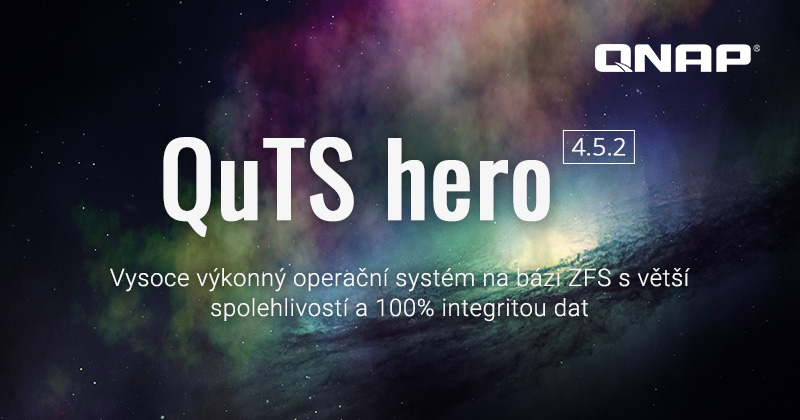Press Release: QNAP® Systems, Inc. (QNAP) has officially introduced the operating system QTS heroh4.5.2 for NAS. With a number of improvements over the previous version, QuTS hero h4.5.2 adds support for SnapSync in real-time to realize data synchronization for backing up important data, and the patented QSAL (QNAP SSD Antiwear Leveling) algorithm to prevent simultaneous failures of multiple SSDs for higher data protection and reliability system.
Ensure thorough data protection with real-time SnapSync
QuTS hero is based on 128-bit ZFS file system, which emphasizes data integrity and offers self-healing data, making it ideal for enterprise data stores that require proactive data protection. To ensure uncompromised disaster recovery and ransomware protection, QuTS hero supports an almost unlimited number of snapshots, allowing for balanced snapshot versioning. Copy on Write technology allows images to be created almost instantly without affecting the data being written. SnapSync's advanced real-time block technology instantly synchronizes data changes with the target storage so that the primary and secondary NAS devices always keep the same data, ensuring real-time disaster recovery with minimal RPO and no data loss.

Prevent multiple SSDs from failing simultaneously with QSAL
As the use of SSDs increases, businesses must prepare for a greater risk of data loss due to the difficulty of recovering data from a dead SSD. The QSAL algorithm regularly detects the lifespan and durability of the SSD RAID. When the SSD life is at its last 50%, QSAL will dynamically distribute space for overutilization to guarantee that each SSD has enough time to rebuild before it reaches the end of life. This can effectively prevent the simultaneous failure of multiple SSDs and improve the reliability of the whole system. QSAL has little impact on storage space utilization, but significantly improves overall data protection for flash storage.
Other key features of QuTS hero:
- Main memory read cache (L1 ARC), SSD second level read cache (L2 ARC) and ZFS Intent Log (ZIL) for synchronous transactions with power failure protection for increased performance and security.
- It supports a capacity of up to 1 petabyte for individual shared folders.
- It supports native handling of standard RAID levels and other ZFS RAID layouts (RAID Z) and flexible storage stack architecture. RAID Triple Parity and Triple Mirror ensure higher levels of data protection.
- Block inline data deduplication, compression and decompression reduce file size to save storage space, optimize performance while increasing SSD lifespan.
- Supports automatic loading of WORM WORM (Write Once, Read Many) is used to prevent modification of stored data. Data in WORM shares can only be written to and cannot be deleted or modified to ensure data integrity.
- AES-NI hardware acceleration increases the efficiency of data signing and encryption/decryption over SMB 3.
- It provides an App Center with on-demand apps to enable NAS to host virtual machines and containers, perform local/remote/cloud backups, create cloud storage gateways, and much more.
Discussion of the article
Discussion is not open for this article.